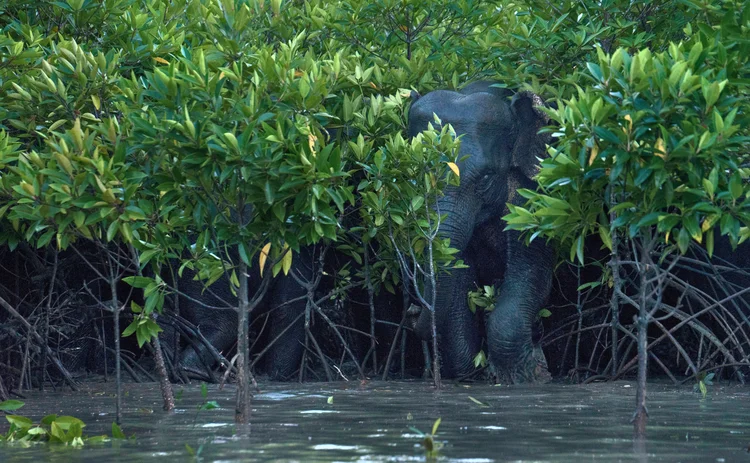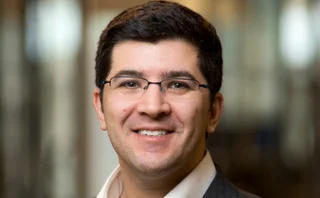Voluntary carbon markets house of the year: Marex


The mangrove forests that blanket the eastern shores of the Indonesian island of Sumatra are crucial to the fight against climate change. These coastal wetlands are a type of blue carbon ecosystem – ocean areas that sequester and store carbon dioxide. They can soak up to five times more carbon than land forests, while also supporting some of the world’s most biodiverse habitats.
That’s why, in 2021, Marex partnered with the Global Mangrove Trust (GMT) to launch an initiative to protect and restore mangrove forests in North Sumatra. The financial firm, which provides services to energy and commodities producers, consumers and traders, financed and helped design the project alongside the GMT. The aim was to both offset Marex’s own operational emissions and to provide its clients with access to carbon credits.
“Our market position enables us to bring high-quality, transparent projects to the market quickly, but also with a high degree of veracity and integrity,” says Robert Watts, Marex’s chief operating officer and head of finance for the Asia-Pacific region. “This is an additional service that we can offer to our clients.”
At the beginning of this project, [Yagasu] spoke to community members to understand the unique deforestation drivers for each local village. It then tailored the project activities in response
Robert Watts, Marex
And being involved in the project from origination through to distribution gives the firm oversight over project type and methodology, as well as full transparency on decisions that help ensure credit integrity and the wider social and environmental benefits, adds Bastien Declercq, head of environmental, and chief executive of CSC Commodities, a division of Marex.
For the latter, community-driven design has played a key role in providing benefits beyond climate impact through initiatives that focus on further education about mangroves for the local community, as well as other issues. In 2024, for example, the project launched a free school boat, which provides safe and reliable transport for 50 students to and from school. The project also supports local women-led co-operatives by providing tools and business training.
“It’s very community-driven,” explains Watts. “Yagasu, our non-profit partner in Indonesia, has long-standing relationships with these communities. At the beginning of this project, it spoke to community members to understand the unique deforestation drivers for each local village. It then tailored the project activities in response.”
Watts says that Marex spotted a gap in the market for this kind of offset project and sought out partners that could also work quickly to bring it to market. GMT and Yagasu’s well-established presence in this area was a major benefit in that respect.
Similar considerations came into play when deciding to work with independent credit ratings provider BeZero and with Kumi Analytics, which uses satellite data and machine learning to provide remote-sensing as well as on-the-ground project verification. The credits are verified under the OxCarbon Principles-Based Standard, a not-for-profit spun out by Oxford University Innovation in 2021. It was the only organisation at the time that could work with the project’s remote-sensing data as well as the combined restoration, and avoid deforestation as part of this blue carbon project, Watts says. “These were important elements that would move this market forward, making OxCarbon involvement key,” he says.
The infrastructure already in place within the financial markets space can also support this growth in carbon markets. And Marex is well positioned to support those two markets as they grow together
Bastien Declercq, Marex
In 2024, Marex also brought carbon insurer Kita – a Lloyd’s of London cover-holder – on board to insure Marex’s investment. This has added a layer of security and boosted confidence in the project’s quality, Declercq says: “We essentially have an independent verifier that is willing to put its own balance sheet behind the project.”
Over the past year, the project grew by 50 hectares, with 80,000 new trees planted. The 3,855ha project, which started out at 2,305ha in 2021, had issued more than 100,000 high-quality carbon credits by the end of 2024.
Marex’s environmental business is also positioned for further expansion, Declercq says. “With new emissions trading schemes being developed – including country-led initiatives like Singapore’s emissions trading system, and industry-based mechanisms such as Corsia [Carbon Offsetting and Reduction Scheme for International Aviation] – many regulators are giving companies the choice to pay a tax or surrender a carbon certificate. Projects like this provide a chance to put your money to good use to reduce emissions. And this is where we want to place ourselves, because we are investing for decades to come, not for the next six months.”
This positioning will be useful given developments in the wider environmental markets as governments and organisations discuss the use of Article 6 carbon credits under the Paris Agreement on climate change. “We are potentially going to see compliance markets evolving and new compliance markets coming out,” Declercq says. “The infrastructure already in place within the financial markets space can also support this growth in carbon markets. And Marex is well positioned to support those two markets as they grow together.”
More on Awards
Environmental products house of the year: ENGIE
Energy giant signs raft of forward-thinking environmental deals in Apac
Newcomer of the year: Marex
Commodities and financial services firm expands rapidly across Apac region, entering multiple new markets
OTC trading platform of the year: Marex
Marex’s Agile platform registers impressive volume and client growth in Asia
Technology advisory firm of the year: KWA Analytics
With a focus on strategy and scalability, KWA Analytics improves clients’ operations in Japanese power, biofuels and certificates
Commodities technology house of the year: Topaz Technology
Strong revenue growth, Asia focus and a unique approach to unifying physical and financial risk
Electricity house of the year: Provincial Electricity Authority (PEA)
Power company uses renewables to help Thailand attract energy-intensive manufacturers amid recent geopolitical shifts
Energy Risk Asia Awards 2025: the winners
Winning firms showcase the value of prudent risk management amid challenging market conditions
Data and analytics firm of the year: LSEG Data & Analytics
Energy Risk Awards 2025: Firm’s vast datasets and unique analytics deliver actionable insights into energy transition trends









